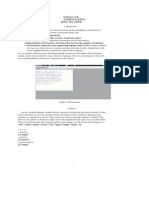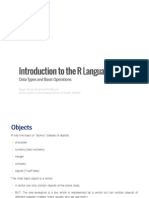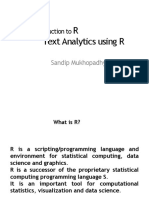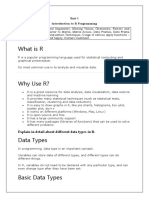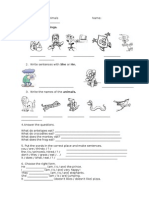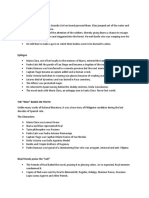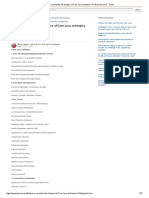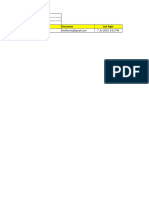0% found this document useful (0 votes)
16 views45 pagesPresentation 3 - Data Structures
The document provides an introduction to data analysis using R, focusing on data types, objects, and structures within R programming. Key topics include numeric, character, and logical data types, as well as vectors, factors, lists, and data frames. The presentation outlines how to create, manipulate, and analyze these data structures effectively.
Uploaded by
Nicky NtonganiCopyright
© © All Rights Reserved
We take content rights seriously. If you suspect this is your content, claim it here.
Available Formats
Download as PDF, TXT or read online on Scribd
0% found this document useful (0 votes)
16 views45 pagesPresentation 3 - Data Structures
The document provides an introduction to data analysis using R, focusing on data types, objects, and structures within R programming. Key topics include numeric, character, and logical data types, as well as vectors, factors, lists, and data frames. The presentation outlines how to create, manipulate, and analyze these data structures effectively.
Uploaded by
Nicky NtonganiCopyright
© © All Rights Reserved
We take content rights seriously. If you suspect this is your content, claim it here.
Available Formats
Download as PDF, TXT or read online on Scribd
/ 45










